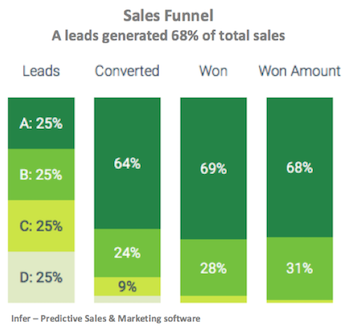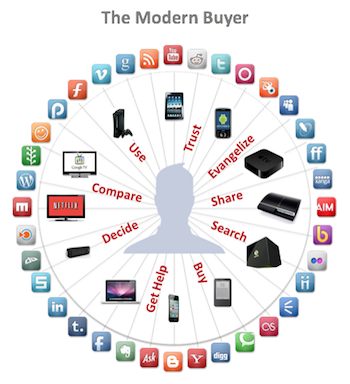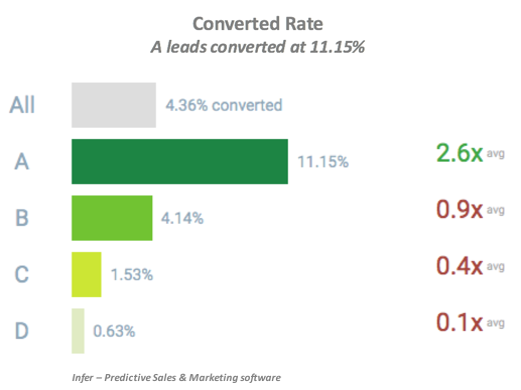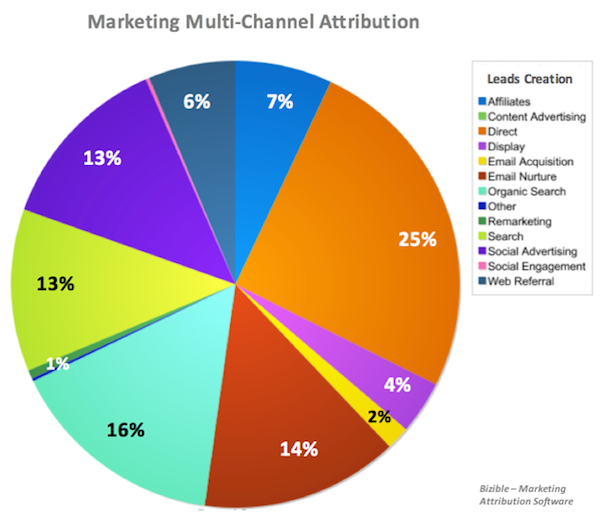This article is a guest post by Franck Ardourel of DNN Corp. It was entered into The Hackies essay contest for the upcoming MarTech conference. Like it? You can register your vote in the contest by sharing it on social media, especially LinkedIn, Facebook, and Twitter.
DNN Corp invested in the martech space in 2016 to build our marketing technology stack around predictive analytics and multi-touch attribution to efficiently and effectively execute marketing activities. We recognized that martech would help us keep up with the buyer’s evolving journey.
12 months after our martech revamp, we delivered the following results:
- Increased advertising reach while decreasing the cost by 84%.
- Drove more visits to our website, and increased click-through by 150%.
- Grew high-quality leads by 80%.
- Boosted our conversion rate by 86%.
- Increased the average total per invoice by 13%.
Today, we understand our target audience more deeply — where to reach them, what channels they use, and what content they consume. We use intent signals to determine when and how to communicate with prospects from first touch to transaction, and we focus on the most valuable buyers.
Through the strategic allocation of advertising resources, we reduced our cost per lead to almost half the industry average ($35 per acquisition versus the industry average of $60 per acquisition) with a very lean marketing team. So, how did we do it?
Our Tools — Martech Stack
We refined our marketing technology stack to include the following solutions:
- Marketo, an email marketing platform
- Hootsuite, a social media scheduling tool
- Infer, a predictive sales and marketing software
- Bizible, a marketing attribution software
- DNN Evoq, a content management system (CMS) platform
- Google Analytics, a tracking and analytics solution
- Salesforce, a CRM software platform
To support advertising and lead-nurturing management, we integrated predictive analytics and multi-channel attribution tools (Infer and Bizible) with a content management system (DNN Evoq) and CRM systems (Salesforce and Marketo).
This combination allowed us to collaborate more effectively, to conduct data analysis, to measure advertising, and to nurture our potential customers. Martech enables us to collect both buyer data and advertising data that predictive analytics systems use to continually refine marketing programs, improve inbound and outbound advertising, and facilitate lead-nurturing management.
Our Target — Building Presence Throughout the Buyer’s Journey
Moments of truths can be identified through signals, such as a request for a piece of content in a specific context (tradeshow or online) through a channel (e.g., search engines, social media, and smart devices). At the same time, signals could also reveal what buyers intend to purchase. The combination of context-based signals and intent-driven signals can provide an enormous amount of useful data, which is a boon for marketers.
At DNN, after collecting firmographic and demographic data about buyers, we determine what content best fits each of their moments, and then we identify the most effective means of delivering that content to them.
We wanted to extract the most value out of every intent-driven signal from the buyer’s journey. However, because the buyer’s journey is comprised of many of these moments, we had difficulty analyzing what actually affected leads, opportunities, and sales conversions. In addition, we needed to know where to find our best prospects.
To gain better insights, we decided to take advantage of machine learning to build predictive analytics models. Specifically, we combined multi-channel attribution and lead scoring to optimize our advertising activities and lead-nurturing management.
Our Strategy — Blending Multi-Channel Attribution and Lead Scoring
Our integrated system (CMS, CRM, predictive analytics, and attribution tools) measures every marketing campaign and tracks every touchpoint to provide us with a holistic view of how marketing activities perform throughout the entire sales funnel.
This system primarily helps us to identify prospects, based on their apparent buying intentions at various points in their journey. We then leverage advanced machine learning, fed with information about our current customer base, to further qualify prospects who are most likely to become customers. Then we pass this machine-refined list through predictive lead scoring, which produces the final list of purchase-ready prospects that we send to our sales team.
Predictive lead scoring is critical to maximizing sales and advertising productivity. In addition to identifying highly qualified leads, it also helps us optimize marketing campaigns to increase reach and acquisition.
To understand how each advertising channel, campaign, or content contributes to lead generation and revenue, we added multi-channel marketing attribution (i.e., Bizible) to our predictive lead scoring step.
The multi-channel attribution model identifies highly qualified leads based on channels used and pieces of content consumed by prospects at moments in their buyer’s journey. The marketing attribution system also determines the impact of each paid channel.
For instance, we are able to determine the revenue contribution of each paid advertising channel (e.g., SEO, paid search, social advertising, content syndication, affiliate, content syndication, or tradeshow) and the true return on investment (ROI) for all marketing activities.
To do multi-channel attribution, we track multiple factors by adding UTM parameters to all campaign URLs. These parameters include the campaign source (channel), the medium, the content, and the campaign identifier (CID). The more complete and accurate our data is, the better our advertising and nurturing campaigns perform.
Today, we have the capability to:
- Connect our CMS and CRM system to the best-in-class predictive marketing tools.
- Publish to multiple channels and support marketing activities with the right messaging.
- Advertise in channels that maximize the output at the bottom of the funnel.
- Accelerate the sales process by engaging buyers at the right moment.
- Refine our marketing processes by measuring and analyzing the impact of all the above.
With marketing operations tied to our marketing technology stack, we can track and measure the buyer’s journey, as well as analyze advertising and lead-nurturing results. We can see what performs well (content and offers) and where (channel and campaign).
For instance, we discovered that the majority of high-quality opportunities and close deals came primarily from Google Search, from long-tail keyword campaigns, and from webinar offers. More importantly, we figured out how to minimize our marketing expenses by smartly allocating our investments throughout the entire funnel and by optimizing our marketing strategy based on program performance.
What did you think of this article as an entry in The Hackies essay contest for the upcoming MarTech conference? If you liked it, you can register your vote in the contest by sharing it on LinkedIn, Facebook, and Twitter.







